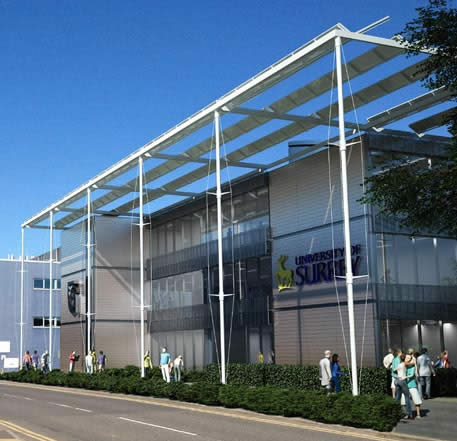
5G is expected to start arriving in around 2020, but before we get to that point a whole lot of research and development needs to happen.
There are various bodies around the world working on it, but one of the most significant is the 5G Innovation Centre and it’s here in the UK. Here’s everything you need to know about it.
What is the 5G Innovation Centre?
The 5G Innovation Centre is an academic research centre dedicated to defining and developing 5G infrastructure.
Housed at the University of Surrey in Guildford, it’s comprised of 170 researchers who work from a purpose-built building to trial 5G ideas, prove concepts and validate standards.
The Centre is funded by £12 million from HEFCE (the Higher Education Funding Council for England) and over £68 million co-investment from the Centre’s industry and regional partners, which include EE, Huawei, Telefonica, Vodafone, BT, Ofcom, Samsung, BBC and many others.
What is its mission?
The 5G Innovation Centre wants to see a world where everything is provided wirelessly to the end device and coverage is consistent and reliable, regardless of whether you’re in a densely populated urban centre or a sparse rural environment.
It wants to see the next generation of mobile data technology deployed of course, but its vision for 5G infrastructure sees it as more user, demand and device centric, allowing network and spectrum resources to be moved or assigned where they’re needed at any given time, so that the data rate and latency is always sufficient for everyone.
It believes this is essential for it to support an ever more connected society, especially as the internet of things begins to grow.
What has it achieved so far?
So far the 5G Innovation Centre has largely been focused on getting its own infrastructure up and running. The Institute for Communications building (home to the 5G Innovation Centre) was recently completed and it’s also constructing three masts and 45 antennae for a small-scale, self-contained mobile network.
It’s the first of its kind globally and is a fully functioning 4G network which will gradually be upgraded to a 5G one as the 5G Innovation Centre uses it to test and roll out new technologies.
So far researchers have already achieved record breaking 5G speeds of one terabit per second in tests according to V3.co.uk. That’s around 65,000 times faster than average 4G speeds and the Centre hopes to demonstrate the technology to the public in 2018.
What is it working on now?
The 5G Innovation Centre is carrying out work and research in seven key areas, each with its own dedicated research team and industry partners.
There’s ‘Content and User/Network Context’, which aims to find ways to control network resources and operation in order to provide perceived infinite capacity, so that everyone and everything can reliably and consistently connect to 5G.
Then there’s ‘New Air-Interface’, which is focused on making small cells more efficient, and ‘Light MAC (Medium Access Control) and RRM (Radio Resource Management)’, which is working on maximising the number of users in a resource limited network.
‘Multi-Cell Joint Processing’ aims to prevent interference caused by overlapping radio cells and even combine signals across multiple cells in order to boost capacity and data rates.
‘Antennas and Propagation’ looks to create new antenna designs, suitable for different environments and frequencies.
‘System Architecture and Coexistence’ aims to define and develop 5G system architecture, and finally ‘Testbed and Proof of Concept’ implements and evaluates technology and research in real world situations in order to see how well they work in practice.
All of this research is ongoing and we’re not likely to see many finalised ideas or commercial applications for a while yet, but you can be sure that when 5G does roll around the 5G innovation Centre will have had a big hand in creating and defining it.





